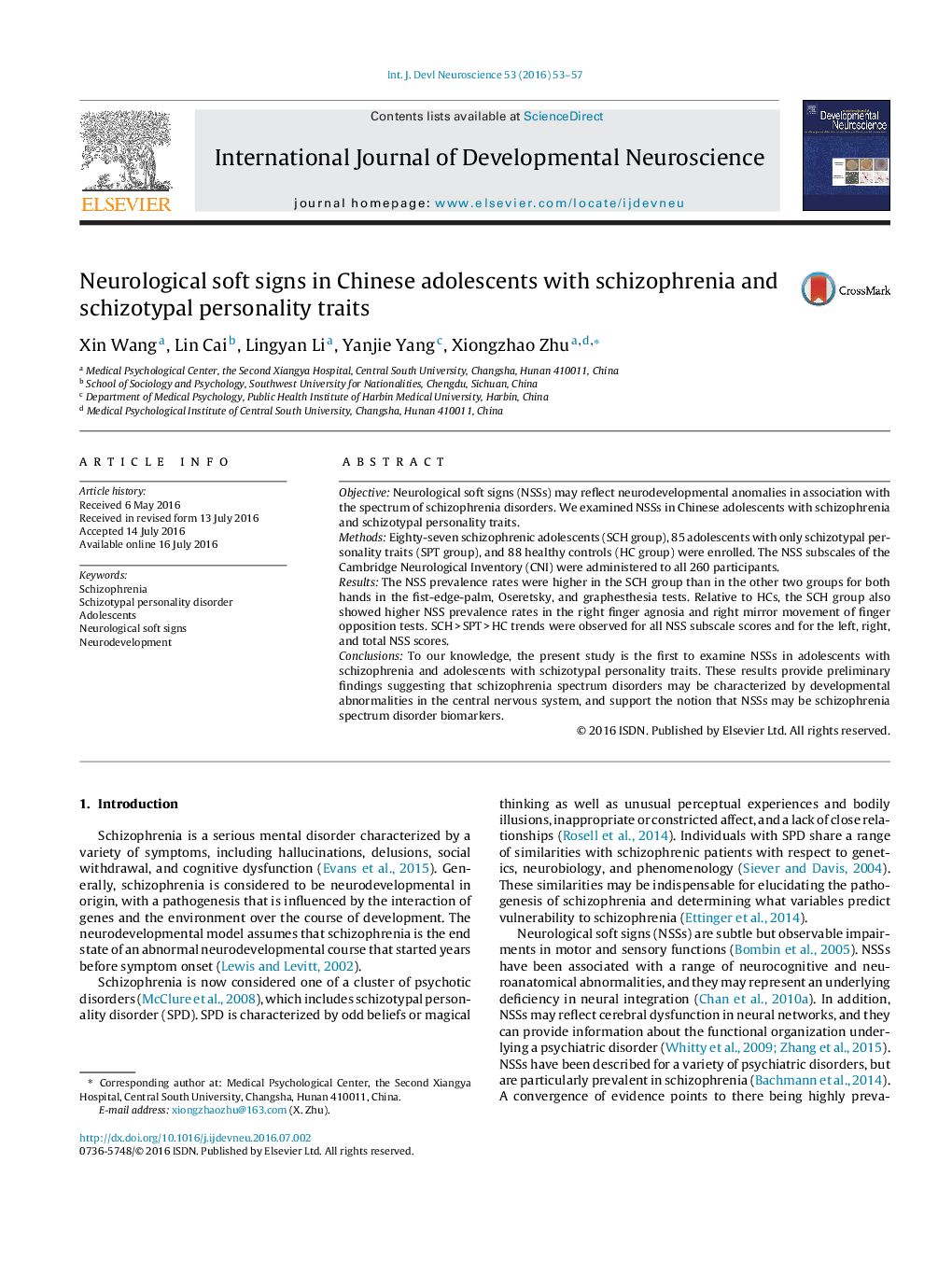| Article ID | Journal | Published Year | Pages | File Type |
|---|---|---|---|---|
| 2785614 | International Journal of Developmental Neuroscience | 2016 | 5 Pages |
•The SCH group and SPT group had greater NSS severity than healthy controls.•SCH > SPT > HC trends were observed for all of the NSS subscale scores as well as for the left, right, and total NSS scores.•Schizophrenia spectrum disorders may be characterized by developmental abnormalities in the central nervous system.•NSSs may be schizophrenia spectrum disorder biomarkers.
ObjectiveNeurological soft signs (NSSs) may reflect neurodevelopmental anomalies in association with the spectrum of schizophrenia disorders. We examined NSSs in Chinese adolescents with schizophrenia and schizotypal personality traits.MethodsEighty-seven schizophrenic adolescents (SCH group), 85 adolescents with only schizotypal personality traits (SPT group), and 88 healthy controls (HC group) were enrolled. The NSS subscales of the Cambridge Neurological Inventory (CNI) were administered to all 260 participants.ResultsThe NSS prevalence rates were higher in the SCH group than in the other two groups for both hands in the fist-edge-palm, Oseretsky, and graphesthesia tests. Relative to HCs, the SCH group also showed higher NSS prevalence rates in the right finger agnosia and right mirror movement of finger opposition tests. SCH > SPT > HC trends were observed for all NSS subscale scores and for the left, right, and total NSS scores.ConclusionsTo our knowledge, the present study is the first to examine NSSs in adolescents with schizophrenia and adolescents with schizotypal personality traits. These results provide preliminary findings suggesting that schizophrenia spectrum disorders may be characterized by developmental abnormalities in the central nervous system, and support the notion that NSSs may be schizophrenia spectrum disorder biomarkers.
